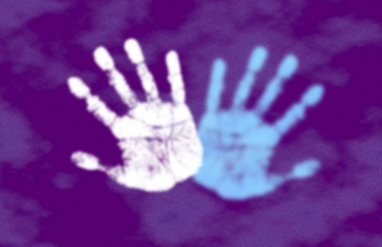How’s this for an email?
Well, I guess I have time to tell you about passive-aggressive writing …. It’s short notice, and as I mentioned in my previous email, I’ve been extremely busy lately. But it’s no big deal. Clearly, this is more important for you … Thanks.
Reading this probably had you rolling your eyes and made your skin crawl. The email takes a tone that many of us are sadly all too familiar with—it’s dripping in snark, aggressively vague, and lacking any clear resolution. It’s a classic passive-aggressive note.
What does passive-aggressive mean?
Passive-aggressive is an adjective defined as “a personality type or behavior marked by the expression of negative emotions in passive, indirect ways, as through manipulation or noncooperation.”
That’s a lot to take in! That’s because the phrase passive-aggressive was first coined in 1945 by Colonel William Menninger, an army psychiatrist and behavioral specialist. Passive-aggressiveness was once recognized as its own personality disorder.
According to Menninger’s now-declassified bulletin on the subject, the original diagnosis was used to describe soldiers who expressed their negative feelings toward their work and leaders through “passive measures, such as pouting, stubbornness, procrastination, inefficiency, and passive obstructionism.”
It’s important to note that many contemporary mental health experts have criticized the way the US military subsequently used Menninger’s description of passive-aggressive disorder to discharge a large swath of veterans without due process.
Today, passive-aggressive is also used in everyday conversation to refer to a tendency some people have toward a less direct style of communication, especially communication that may create conflict. Some potential synonyms for this kind of behavior are negativistic, apathetic, petulant, or snide.
Whatever vocabulary you use to describe this communication style, the fact remains that writing in a passive-aggressive tone can often escalate tensions instead of diffuse them. But how do we spot and correct any passive-aggressive tendencies in our own writing?
One alternative to passive-aggressive communication is assertive communication. By being forthcoming and direct, you leave less room for misinterpretation of your intent and meaning. Assertive is another way of saying decisive, certain, firm, and even positive. These words can help guide your communication.
To make the process of confronting passive-aggressive language easier, here’s a list of three questions to ask yourself before you start typing “per my last email.”
How to communicate more assertively
“How am I feeling?”
Sometimes, in our attempt to mask “negative” feelings like anger or sadness, we end up writing in a passive-aggressive tone. This kind of conflict avoidance can leave the recipient of your note confused about your true feelings, which can lead to further miscommunication. Even if the circumstances don’t allow you to openly express your feelings, like in business correspondence, you can still define how you feel before you write, so you can ensure the intent of your message is clear.
Wrong: “I don’t know. … I guess I have time?”
When you’re unsure of how to respond to a message, use direct vocabulary in your response. The adjective direct is a synonym of assertive; other synonyms include: frank, open, unconcealed, and plain.
Assertive:
- Thanks for the offer. I’ll think it over and get back to you ASAP.
- I appreciate your note. I’ll review this and reply tomorrow.
- I’m going to collect my thoughts. I’ll follow up by next week.
“Am I being transparent?”
When facing a conflict, transparency often leads to the most amicable conclusion for both parties. When writing a message that may come across as passive-aggressive, look for ways to express your feelings with clarity.
Wrong: “Clearly, this is more important than my schedule. I’ll do it.”
Consider if there’s an amicable way to express yourself honestly. Even if it’s not the reply your recipient was hoping for, it at least gives them a accurate understanding of your feelings. Someone who is transparent is easy, honest, sincere, forthright, and unmistakable.
Assertive:
- I understand how important this is to you. With that said, I need to make sure I’m not overbooked.
- I don’t have the bandwidth right now, but will reach out if that changes.
- I’m going to have to graciously pass.
“Is there an actionable next step?”
It’s natural to want an uncomfortable situation to end as soon as possible. However, when addressing conflict, it’s always best to consider what actions both parties can take to reach the best conclusion.
Wrong: “Thanks.”
In some cases (obviously not all), you can mask a lot with a “thanks.” There are ways to be more assertive; think of the word action as a next step or effort. By ending your note with actionable next steps, you’re able to set a boundary for the future while also keeping the line of communication open with the recipient.
Assertive:
- Let’s arrange a time to hop on a call.
- If you can send me more details, that would help me plan.
- Let me know how you feel about that, and we’ll go from there.
Although no one ever wants to sound harsh or mean-spirited, when handling conflict, pushing yourself toward a more direct communication style is usually the more respectful (civil, considerate, duteous) option for everyone involved.
Being candid and forthcoming lets your recipient know exactly how you feel and what they can do in the future to better communicate with you. It also helps you feel more confident and assured in expressing yourself.
- You know who’s known for being assertive? People born under the Aquarius sign. Read more about Aquarius here.
- Then take the next step away from passive-aggressive language by kicking the word interesting to the curb for more direct, effective, and descriptive language.














